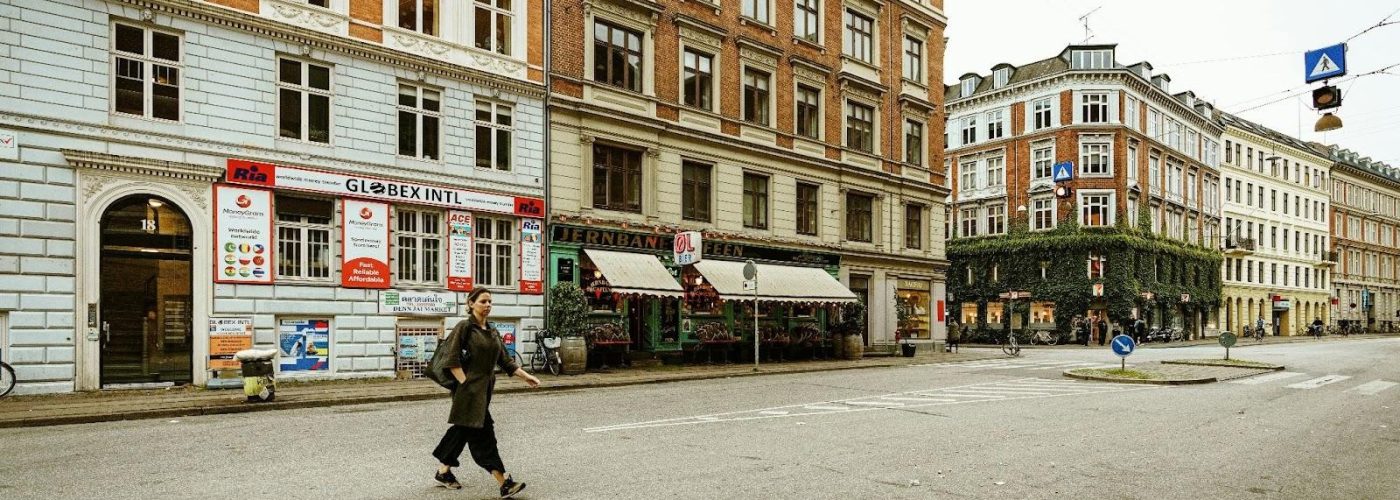As cities continue to grow, walkability is becoming a central part of how livable places are shaped. There are lots of reasons why walkable towns and cities are sought-after. They reduce car dependence, promote better health, and can even help support stronger local economies. Around the world, many different cities are showing exactly how thoughtful planning can support walking as an everyday activity and mode of transport. Here are six approaches to creating walkable locations.
Proximity to Amenities – Copenhagen, Denmark
Looking for walkable cities? Copenhagen is a name that comes up often. Copenhagen is widely recognised for its walk-friendly layout. Its neighbourhoods are built with mixed-use zoning, placing homes close to cafes, public transport, shops, and parks. This is great for helping residents carry out daily tasks on foot and keeping the local streets active throughout the day. This high level of walkability wasn’t always the case for the Danes. According to The Global Designing Cities Initiative, Copenhagen’s 1.15 km main street, Strøget was converted into a pedestrian-only street in 1962 as an experiment. This experiment was a success and led to an increase in Danish pedestrian space from 15,800 square metres in 1962 to 99,700 square metres in 2005. Urban planners should look to Copenhagen as an example of how careful land use decisions can make walking the easiest choice for communities.
Strong Pedestrian Connectivity – Portland, Oregon, USA
Portland’s grid system and “20-minute neighborhoods” approach help make walking a convenient option for residents and visitors. In 2009, the city of Portland aimed to get 90% of its residents within 20 minutes of many needs and services, including schools, public transit, grocery stores, and parks. This was very ambitious, considering how car-centric many cities in the United States are. Essentially, the aim was to not only reduce carbon emissions from the use of cars, but also to get Portland citizens moving. Choosing short walks or even bike rides instead of relying on a car was expected to improve the health of residents. The City of Roses has an 88 out of 100 Walk Score thanks to how easy it is to walk from home to school, work, or shops. The walkability of Portland is not just limited to its city streets, with the city also boasting an extensive network of trails and parks that provide opportunities for residents and visitors to explore the natural beauty of the area on foot.
Safe, Calming Streets – Tokyo, Japan
Tokyo shows how pedestrian safety can be built into the design of even the busiest places. Small side streets provide pedestrian-friendly corridors, often lined with shops and cafes that draw you in and encourage walking. This kind of urban exploration is exclusive to those on foot, as you can never get to all the nooks and crannies of a city from behind the wheel. The designated walking lanes, frequent crossings, and strong signage create an environment where people feel safe and in control while on a stroll. Physical features like narrow roads and raised crossings naturally slow vehicles and give space and priority to those walking. All of this adds up to Tokyo being ranked the 6th most-walkable city in the world, and the only non-European city in the top 10. This design approach has made Tokyo a popular and enjoyable city to explore on foot.
Local Leadership in Suburban Walkability – Penrith, Australia
Penrith, located in Sydney, Australia, stands out as a leader among smaller urban areas. The New South Wales town was recently rated number 1 most-walkable small city in Australia by Compare the Market, with a walkability score of 16 out of 20. This outcome reflects years of planning that focused on compact development and walkable neighbourhoods. It’s a great example of how walking-friendly design is entirely possible outside capital cities. It can be a reality for small and big cities, alike.
In the modern world of car-centric grids, creating sustainable and walkable communities is not just a pipedream. With thoughtful planning and commitment, it’s absolutely an achievable goal. From large metropolitan areas to smaller towns, the benefits of walkable urban design are clear: walkability promotes healthier lifestyles, reduces environmental impact, and fosters vibrant, connected communities. The examples highlighted throughout this article serve as a hopeful reminder that progress is possible.





